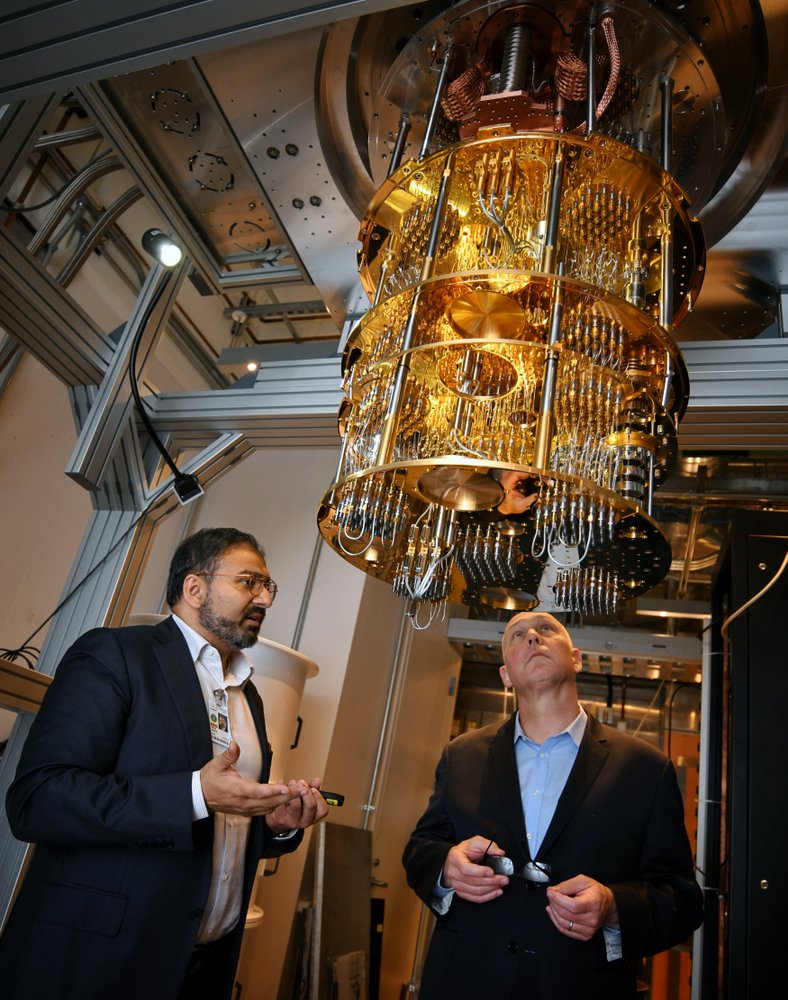
Chris Fall, Director of DOE’s Office of Science, wrapped up his two-day Berkeley Lab visit yesterday, which included tours of the Lab’s user facilities and brief talks on many research capabilities — from machine learning to accelerators to quantum information science — a broad introduction to how the Lab’s approach of team science and word-class tools of discovery supports DOE’s research mission.
Go here to see a recap of his visit on Twitter.
Fall, who joined the Office of Science in May, began his visit Monday with a welcome and overview by Lab Director Mike Witherell, Deputy Lab Director for Research Horst Simon, and Deputy Lab Director for Operations Michael Brandt.

“We greatly appreciated Chris Fall for spending time with us the past two days, meeting with many of our researchers, and learning about our remarkable range of science and advanced instruments and user facilities,” said Witherell. “His visit provided us with an opportunity to highlight how our expertise and capabilities help address the nation’s challenges in science and technology.”
Among the highlights of his visit, Fall learned how the Lab is applying machine learning to a wide range of science domains, such as materials discovery and cosmology, by leveraging expertise in applied mathematics and computer science. Another topic was the Lab’s leadership role in pushing the frontiers of quantum information science, which could lead to incredibly powerful computers to address today’s most difficult research challenges, and new sensor technologies for discoveries in physics and other fields.
He also received an update on the U.S. Magnet Development Program, a multi-institutional partnership led by Berkeley Lab to advance accelerator magnet technology for future colliders.
In addition, Fall was briefed on the Lab’s efforts to help develop the next generation of microelectronics. And he received an introduction to the science of BioEPIC, which integrates ongoing projects and is developing new research tools to explore how interactions among microbes, water, soil, and plants shape entire ecosystems.
Fall’s visit coincided with a visit by a delegation from the Helmholtz Association of German Research Centers, which offered the opportunity for discussions on international collaborations.
His itinerary also included stops at four of our five Office of Science user facilities: the Advanced Light Source, the Molecular Foundry, NERSC, and ESnet. And he received an overview of the recently dedicated Integrative Genomics Building, future home of the Joint Genome Institute (also an Office of Science user facility) and the DOE Systems Biology Knowledgebase (KBase). The Lab’s user facilities serve more than 12,000 scientists each year with capabilities in high-performance computing and data science, genomic science, and materials synthesis and characterization. At the Molecular Foundry, for example, he learned about the development of a new plastic that could be recycled again and again.
Another stop was the Berkeley Lab Laser Accelerator (BELLA) Center, which focuses on the development and application of laser-plasma accelerators.



Fall had breakfast with several Lab participants in the Early Career Research Program, a DOE award program that supports the development of research projects of outstanding scientists early in their careers, and recent Lab recipients of the prestigious Presidential Early Career Award for Scientists and Engineers (PECASE), the highest honor bestowed by the United States government on early-career researchers.